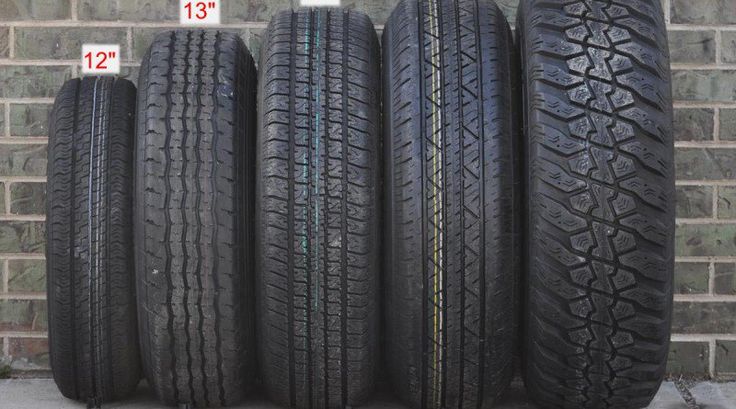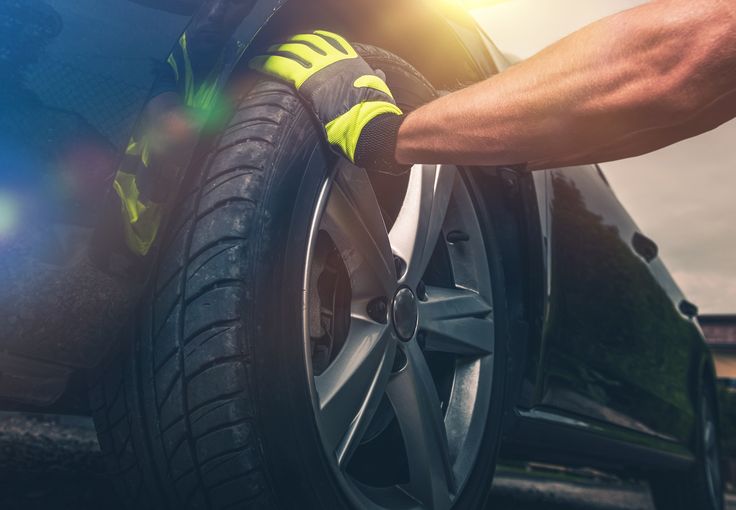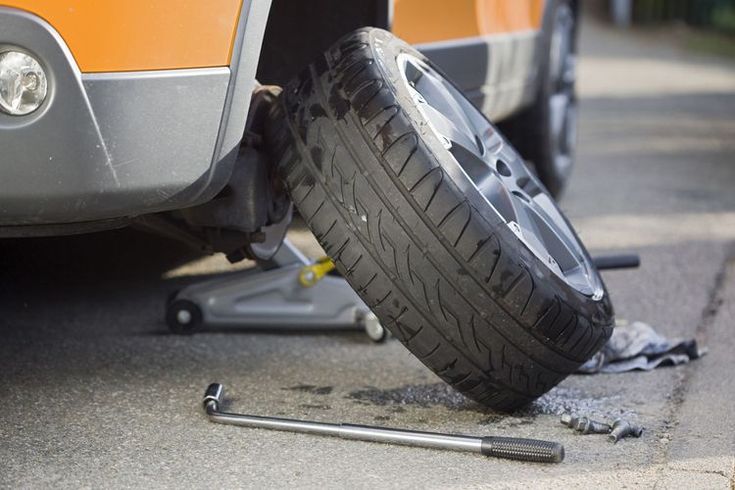It would be cool to have bigger tires for your car. With the desire to give the car a more eye-catching appearance or improve the vehicle’s performance. Many drivers decide to equip their cars with larger tires without changing the diameter of the rims so the problem here: Is changing tire size on same rim possible?
Contents
Changing Tire Size On Same Rim: Is It Safe?
There are many reasons why car enthusiasts want to change their tire size. The reason may be because your tire size is rare, less produced or your tire is too expensive, etc. and you want to find a more suitable tire size. And one thing is for sure many drivers think “Changing the tire size will give more strength, and sportiness improves the traction of the car, and also makes a big change in the size, material, and style of the wheel.” So can you change tire size on the same rim?
Our answer is “it’s possible for you to change the tire size without changing the rim but you need to make sure that the rim and the tire have the same internal diameter ” Due to the characteristics of flexible tires, the width and height can be changed, however, if you need to change the size of the tire, you should pay attention that the size of the new tire should not exceed 3% of the overall size of the original tire on the car. At the same time when changing the tire size, you should pay attention to important factors such as:
- Width
- Height
- Tire circumference
- Number of rotations
Generally, you can put a different size tire on your car but we don’t recommend that. You can find the reason in the next part:
Why You Shouldn’t Change The Tire Size On Same Rim?

In most cases, you should follow the factory sizing for your car tires. This is because of myriad facets of your vehicle that were specially engineered around the tire, most notably its diameter. And each set of rims and wheels is only suitable for a certain tire size. If the tire size you choose is not correct, the vehicle’s fuel economy will be affected, the tire will wear quickly and the wheel alignment will also be misaligned.
Tire size also has a direct effect on transmission issues, engine durability, braking efficiency as well as tire life… On the other hand, according to the law, tires must be properly sized and in accordance with the technical standards of each type of vehicle. Therefore, when you choose to buy car tires, you need to choose the right size according to the specifications.
When you increase or decrease the size of your tire, the car may not function optimally. Tire rotation is taken into account by your car’s computer and it’s a huge factor in a large number of its calculations. In some unexpected cases, changing the tire size can cause the vehicle’s handling sensors to be affected by the vehicle’s sensors which will determine many things based on the rotation of the tire. Some parts that can be affected include:
- Speedometer
- Measure the distance
- Anti-lock brake system
- Torque
- Traction control
This causes the vehicle’s sensor processing to be affected and from there, the system can make false judgments compared to reality. Since then, when facing emergency situations, the vehicle’s safety systems will react slowly or react incorrectly compared to calculations, leading to potential dangers for the driver.
In addition, replacing the tire over the standard size also makes the car completely no more grip than the original, even causing dangerous slips in many situations.
How To Know If Tires Will Fit Rims?
You may have a lot of concerns when choosing a new tire. With many parameters and performance types of tires, you may wonder that what tires fit my rims. To know that, first you should understand how to read exactly all the indicators on your tire.

How to read the tire size?
Starting from the very beginning and perhaps many of you are already familiar with these simple measurements, but for some drivers who still don’t know about these parameters, we will make everything clear in this part:
To help you understand easily, we will take an example, when the sidewall of your tire has a symbol line of 165/65R14 79T, the meaning of each letter and the number is:
– 165 is the width of the tire in millimeters (mm). The main factor to consider when choosing a car tire width is to match the rim size.
– 65: tread height/ aspect ratio: This indicator will tell you the height of your tire, from the bead to the top of the tread. This is described as a percentage of the tire width.
– 14: This number specifies inches, which means the wheel rim diameter of your tire is designed for.
– Tire structure: R corresponds to Radial structure (R designates that the tires were made using radial construction). This is also the most common structure. Older tires are diagonal bias (D) or bias belted (B) construction.
– 79: The load rating is a number that correlates to the maximum rated load for the tire. A higher number indicates that the tire has a higher load capacity.
– Y: this letter follows the load rating indicating the maximum speed allowable for the tire.
>> Related post: Can I Put Bigger Tires On My Car?
What tires fit my rims?
If you do not intend to change the rims, the rim parameters will determine which tires work well or not be suitable. Simply put, the rim size will tell you the range of possible tire sizes on your car. You can refer to the rim width size chart to know more information:
| Rim width (inches) | 25 | 30,35,40 | 45 | 50, 55 | 60,65,70 | 75,80 |
| 3,5 | – | – | – | – | – | 125,135 |
| 4 | 135 | 145 | ||||
| 4,5 | – | – | – | – | 145, 155 | 155,165 |
| 5 | – | – | – | 155, 165 | 165, 175, 185 | 175, 185 |
| 5,5 | – | – | 165 | 175 | 185 | 195, 205 |
| 6 | – | – | 175, 185 | 185,195 | 195, 205 | 215, 225 |
| 6,5 | – | – | 195 | 205 | 215, 225 | 235 |
| 7 | – | 195 | 205, 215 | 215, 225 | 235, 245 | 245, 255 |
| 7,5 | – | 205, 215 | 225 | 235,245 | 255 | 265 |
| 8 | – | 225 | 235, 245 | 255 | 265,275 | – |
| 8,5 | – | 235, 245 | 255 | 265, 275 | 285, 295 | – |
| 9 | 255 | 255 | 265, 275 | 285 | 305 | – |
| 9,5 | – | 255, 265, 275 | 285 | 295, 305 | 315 | – |
| 10 | 275 | 285 | 295 | – | – | – |
It can be seen that the width of the rim and the width of the tire are two closely related dimensions. We can take an example: If the width of your rim is 6 inches like in the chart, the minimum tire width is 175 and the optimum width range is 185 to 215, maximum width is 225. So you will have some options for the tire size with the same rim.
>> Read more: What Size Rims Fit My Car?
Some Notes When Changing The Tire For Your Car?
- When choosing to buy tires, drivers should carefully look at the specifications and sizes of tires given by the manufacturer. The parameters are displayed on the side of the tire. Customers should not choose tires with high pressure, maximum speed ratio, and hardness because they are easy to make noise and have a short life. The tire size must match the wheel design of the vehicle, so it is important to know the size of the original tire and the size of the wheel that is mounted on the vehicle.
- In addition, if you still want to change the tire, you should choose a good tire with good technology, high traction, and rim grip. For tires, choose quality tires that match the wheels. Choose a reputable tire brand. If you choose lightweight wheels, high-performance tires will feel faster.
- Rims should be checked for damage, dented or not, and reshaped if necessary before replacing new tires. In addition, this can also improve the alignment between the tire and the rim, helping to reduce vibrations, and providing smooth operation at high speeds.
- The speed rating is also quite important in choosing the right tires. When observing the side surface of the tire, a series of letters such as T, H, V, W, Y, Z, etc. can be seen spread along the tire. This series of letters specify each speed level that allows the tire to reach a maximum speed with “H” being 240km/h, “T” being 200km/h and V, W, Y or Z can maintain a speed of 239 – 299km/h. However, tires that can operate at higher speeds tend to have a shorter lifespan.



